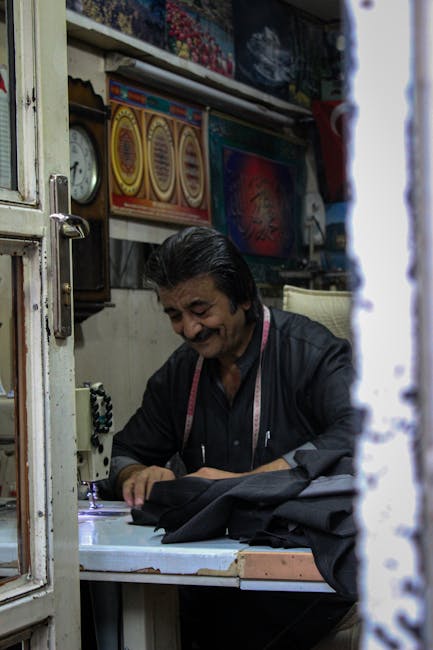Mastering the Running Stitch: A Comprehensive Guide for Beginners and Beyond
The running stitch, a fundamental hand sewing technique, often overlooked for its simplicity, is actually a versatile and powerful tool in the sewer’s arsenal. From quick repairs to intricate embroidery, understanding its nuances can elevate your sewing projects to a new level. This comprehensive guide will delve into the intricacies of the running stitch, exploring its variations, applications, and the subtle art of mastering its execution.
What is a Running Stitch?
At its core, the running stitch is a simple straight stitch where the needle enters and exits the fabric at regular intervals, creating a series of evenly spaced vertical stitches. Its simplicity belies its utility; it’s the perfect stitch for basting, gathering, and creating delicate embroidery effects. The uniform nature of the stitch makes it ideal for projects where a neat, consistent look is desired.

Key Characteristics of a Running Stitch:
- Simplicity: Easy to learn and execute, even for beginners.
- Speed: Relatively quick to stitch, making it efficient for larger projects.
- Versatility: Adaptable to various applications, from basting to decorative stitching.
- Strength: Provides adequate strength for many applications, particularly when used with appropriate thread.
- Neatness: Produces a clean and even stitch when executed correctly.
How to Execute a Perfect Running Stitch: A Step-by-Step Guide
While seemingly straightforward, mastering the running stitch involves attention to detail. Here’s a step-by-step guide to ensure consistent and aesthetically pleasing results:
- Gather your materials: You’ll need a needle (size appropriate for your fabric and thread), thread, fabric, and sharp scissors.
- Thread your needle: Leave a sufficient tail (about 6 inches) for easy knotting.
- Knot your thread: Tie a secure knot at the end of your thread to prevent unraveling.
- Begin stitching: Bring the needle up from the underside of the fabric at your starting point.
- Create the stitch: Insert the needle a short distance (typically ¼ inch to ½ inch) away from the starting point, bringing it back up through the fabric. Repeat this process, maintaining a consistent distance between each stitch.
- Maintain consistency: Pay close attention to the spacing between each stitch. Uniformity is key for a neat appearance.
- Secure the end: Once you reach the end of your stitching line, tie a knot to secure the thread. You can do this by passing the needle through a couple of the previous stitches before tying a knot.
Variations of the Running Stitch
The running stitch isn’t just a single technique; it’s a foundation for several variations, each offering unique applications:
1. Basting Stitch:
A longer, looser running stitch used to temporarily hold fabric pieces together before sewing. It’s easily removed once the permanent stitching is complete.
2. Gathering Stitch:
A running stitch used to create gathers in fabric. By pulling the thread after stitching, you can bunch the fabric, creating fullness or ruffles.
3. Decorative Running Stitch:
Using various thread colors and stitch lengths, you can create beautiful and intricate designs. Experiment with different spacing and thread weights for unique effects.

4. Backstitch Variation:
While not strictly a running stitch, it’s a closely related technique where each stitch slightly overlaps the previous one, resulting in a more durable and less likely to unravel stitch than a simple running stitch. This is a great alternative for areas which need to bear more stress.
Applications of the Running Stitch
The versatility of the running stitch extends across various sewing projects:
- Basting: Temporarily holding fabric pieces together.
- Gathering: Creating ruffles and fullness in fabric.
- Appliqué: Attaching fabric shapes to a background.
- Embroidery: Creating simple or complex designs.
- Quick Repairs: Mending seams or small holes in clothing.
- Seam finishing: A simple way to finish raw edges on seams to prevent fraying.
- Creating decorative effects on clothing: Adding subtle detail to garment hems, cuffs or collars.
Troubleshooting Common Running Stitch Problems
Even with its simplicity, common issues can arise when executing a running stitch. Here are some solutions to frequent problems:
- Uneven Stitches: Focus on maintaining a consistent distance between each stitch. Practice on scrap fabric to develop a steady hand.
- Loose Stitches: Use a finer needle and thread suitable for your fabric type. Make sure you are pulling the thread through tightly and consistently.
- Skipped Stitches: Ensure the needle is sharp and properly threaded. A dull needle can cause skipped stitches.
- Difficult to Pull Thread: If your thread is catching or difficult to pull, try using a needle with a larger eye or lubricating the thread with beeswax.
Beyond the Basics: Advanced Running Stitch Techniques
As you gain confidence, explore advanced techniques to enhance your running stitch skills:

- Varying Stitch Length: Experiment with different stitch lengths to create texture and visual interest in your projects.
- Using Different Thread Types: Explore different thread weights, colors, and textures to achieve unique effects.
- Combining with Other Stitches: Incorporate the running stitch with other hand-sewing techniques to create intricate designs.
- Free-Motion Embroidery: Use a running stitch as a base for free-motion embroidery techniques.
The running stitch, though a simple stitch, offers a world of creative possibilities. By mastering its fundamentals and exploring its variations, you unlock a powerful tool for a wide range of sewing projects. So grab your needle and thread, and start stitching!

